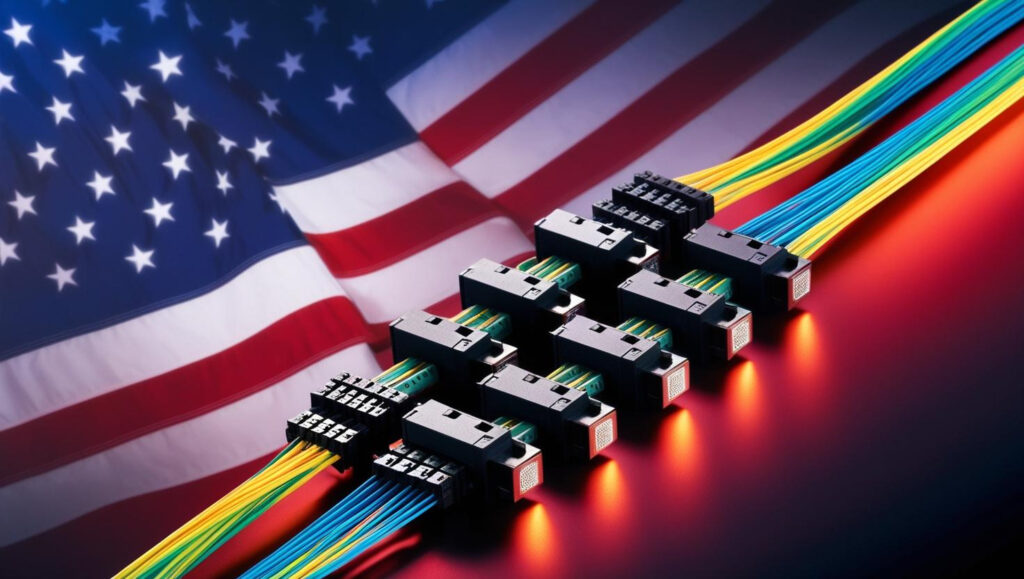The fiber optic components market, a backbone of high-speed internet and modern telecommunications, has not been immune to the effects of global trade tensions. In particular, U.S.-imposed tariffs on imports—especially those from China and other Asian manufacturing hubs—have triggered a wave of uncertainty, reshaping supply chains, pricing dynamics, and investment decisions across the sector.
As the U.S. continues to position itself strategically in the global tech race, fiber optic components have emerged as a key focal point in policy and trade negotiations. This article explores how these tariffs have affected the fiber optic components market, the emerging trends, and what the future holds for this critical industry.

Request US Tariff Impact Analysis Now @ https://www.marketsandmarkets.com/forms/ctaTariffImpact.asp?id=63775446
Immediate Market Impact: Rising Costs and Shifting Sourcing
The most immediate effect of U.S. tariffs on fiber optic components has been increased production and import costs. Many U.S.-based telecom providers and equipment manufacturers rely heavily on components such as fiber optic cables, connectors, transceivers, and amplifiers from Chinese suppliers. With tariffs as high as 25% on certain goods, businesses have been forced to absorb higher costs or pass them along to consumers.
Some companies have sought to shift sourcing to alternative regions such as Vietnam, India, or Mexico. However, this transition is not seamless. These countries may lack the same economies of scale, manufacturing expertise, or established logistics, resulting in supply chain disruptions and extended lead times.
Market Trends: Adaptation, Innovation, and Domestic Investment
While the initial impact was disruptive, the fiber optic industry is showing signs of adaptation and long-term strategic shifts. Key trends include:
- Domestic Manufacturing Expansion: To mitigate tariff risks, several U.S. companies are increasing investments in domestic production of fiber optic components. This not only supports national security objectives but also creates more resilient supply chains.
- Diversification of Suppliers: Businesses are now adopting multi-source procurement strategies to reduce dependency on any single country. This has fueled growth in component manufacturing in regions outside traditional Asia-Pacific hubs.
- Price Stabilization Strategies: Companies are leveraging automation, AI-driven demand forecasting, and long-term contracts to stabilize prices and offset tariff-induced volatility.
- Increased Demand for High-Speed Networks: Despite tariff challenges, the demand for fiber optic infrastructure is surging, driven by 5G rollout, remote work trends, cloud computing, and IoT applications. This underlying demand is cushioning the market against tariff-related setbacks.
Forecasts: Where the Market is Headed
According to industry analysts, the global fiber optic components market is expected to continue its growth trajectory, albeit with some short-term pressure due to tariff-related costs and geopolitical uncertainty. Key projections include:
- Market Size Growth: The fiber optic components market is projected to grow from USD 36.69 billion in 2025 to USD 58.65 billion by 2030, at a CAGR of over 9.8%.
- Shift in Global Manufacturing Hubs: Countries in Southeast Asia and Latin America are expected to see a rise in fiber optic component exports as companies diversify beyond China.
- US Resurgence in US-Based Manufacturing: With government incentives and reshoring strategies, the U.S. share in global fiber optic production is forecast to grow steadily over the next five years.
- Continued Volatility in Global Trade: The ongoing geopolitical environment, especially U.S.-China relations, could continue to affect tariffs, trade policies, and therefore, fiber optic component pricing and availability.
Conclusion: Adapting to a New Normal
While U.S. tariffs have posed significant challenges for the fiber optic components market, they’ve also catalyzed a wave of strategic innovation, regional diversification, and policy-driven domestic investment. As the world becomes more connected and the demand for high-bandwidth infrastructure continues to surge, the fiber optic components industry is expected to remain a cornerstone of global connectivity albeit one that must continuously adapt to shifting geopolitical and economic landscapes.